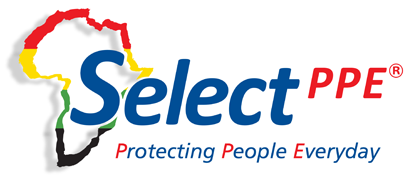So, you’ve made the decision to buy Safety Footwear and that they should be worn in the workplace, but now you are not sure of which type to buy.
Here are some of the Hazards that occur daily in work environments:
- Wet surfaces / conditions
- Slipping
- Cuts and punctures
- Falling objects
- Metal splashes
- Chemical splashes
- Abrasion
- Electrostatic build-up
Wet Surfaces / Conditions

If your working environment is mostly wet or muddy, you need to look at safety boots/shoes/gumboots that are water resistant and/or waterproof, and have a slip resistant sole.
Here are some symbols to look out for when buying your safety shoes:


You need to remember to also take care of your footwear, as its condition will deteriorate if you just leave your safety shoes unattended to after you have worked in muddy or wet conditions.
Here are some Care and Maintenance tips for your safety boots:
How to Maintain Safety Shoes
- Clean on a regular basis
- If the shoes are leather, polish and treat with a leather preservative
- If the shoes are suede, brush first and treat with a water-resistant spray
- Brush and wash the soles to remove any dirt and contaminants
- Keep your shoes stored in a cool, dry location away from direct sunlight
What to Avoid
- Don’t clean with solvent
- Don’t force dry
- Don’t leave in direct sunlight (especially if your shoes are leather)
Some Industries that are most common for having wet working conditions are:
- Agriculture
- Construction
- Road Safety
Slipping

The important thing to remember about any hazard is to always try and eliminate the hazard before continuing your work. Below is the Hierarchy of Controls for hazard management:

Shoes with appropriate traction can help prevent falls in slippery environments. They may also prevent falls from ladders, which are all too common when people don’t wear shoes with proper tread. Your Safety shoes / boots should have slip resistant soles. Footwear that fits well and feels comfortable may also improve balance, which may prevent slips, trips and falls too.
This is the symbol to look out for when you are buying your Safety shoes:

Some Industries that are most common to have slipping hazards are:
- Food Industry including:
- Restaurants
- Grocery stores
- HACCP Workers
- Butcheries, Abattoirs.
- Manufacturing
- Oil and Gas Production.
Cuts and Punctures

Even though your Safety Shoes protect you from most hazards, stepping on a Nail/Screw/Broken piece of glass will penetrate your sole, as your standard safety shoes have a midsole made from polyurethane (PU). Safety shoes with a steel / synthetic anti-penetration insert will protect the foot from glass, nails and such coming in from below the foot. A steel / synthetic anti-penetration insert is a good anti-penetration solution for safety shoes.
This is the symbol to look out for when buying your Safety shoes:

Some Industries that are most common for having puncture and cutting hazards are:
- Construction
- Mining
- Manufacturing
- Emergency Management Services (EMS)
- Road Safety
Falling Objects

Falling objects were the first hazard that inspired the invention of the first Safety shoes with steel toe caps (In the early 1930’s!). This is the most common hazard that you are protected from when wearing your safety shoes. Some companies require a non-steel toe cap which led to the production of composite toe caps. Most safety shoes would have a steel toe cap or composite toe cap.
This is the symbol to look out for when buying safety shoes with toe caps:

Shoes with Metatarsal protection are also considered when protection is needed from falling objects. They have a reinforced Upper to give extra protection to your foot if a heavy object should fall on your foot.
This is what some models look like:



Some industries that are most common to have falling objects as the hazard are:
- Construction
- Manufacturing
- Mining
- Road Safety
- Agriculture
 South Africa
South Africa
 Botswana
Botswana
 Burkina Faso
Burkina Faso

 Pallet
Pallet 
There are no comments for this article